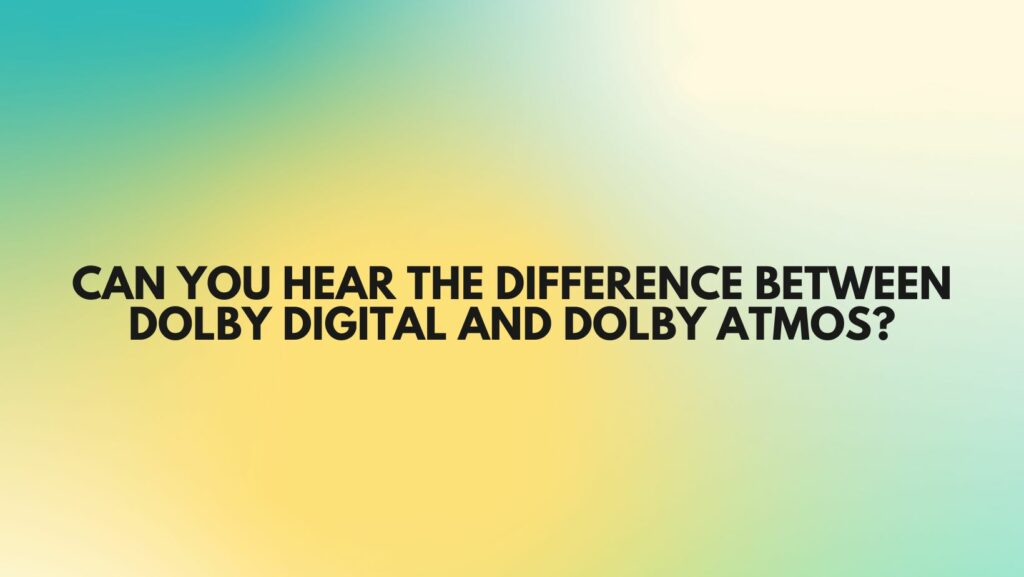In the symphony of audio technologies, Dolby Digital and Dolby Atmos stand as cornerstones, each contributing its unique notes to the immersive soundscape. The question that often arises is: Can you hear the difference between Dolby Digital and Dolby Atmos? In this exploration, we delve into the distinct characteristics of these two technologies, unraveling the auditory nuances that set them apart.
The Essence of Dolby Digital:
Dolby Digital has long been synonymous with multi-channel audio in movies, streaming, and home theater systems. It is a compression technology that delivers discrete channels of audio to provide a surround sound experience. Commonly associated with 5.1 or 7.1 configurations, Dolby Digital excels in creating a sense of spatial awareness, immersing listeners in a multi-directional audio environment.
The Arrival of Dolby Atmos:
Dolby Atmos, a more recent innovation, takes the audio experience to a new dimension. Unlike the channel-based approach of Dolby Digital, Dolby Atmos introduces height channels, allowing sounds to move freely above and below the listener. This three-dimensional soundscape provides a more immersive and lifelike audio experience, creating an unparalleled sense of depth and directionality.
Discerning the Differences:
- Heightened Realism:
One of the most noticeable differences between Dolby Digital and Dolby Atmos lies in the heightened realism offered by the latter. Dolby Atmos creates a sense of space that goes beyond the traditional surround sound experience, making listeners feel as though they are within the audio environment rather than merely surrounded by it.
- Object-Based Audio:
Dolby Atmos introduces the concept of object-based audio, allowing sound designers to place and move audio objects in a three-dimensional space. This dynamic flexibility enables a more precise localization of sounds, contributing to a richer and more accurate auditory experience. Dolby Digital, while effective, relies on predefined channels for audio distribution.
- Adaptability to Different Setups:
Dolby Atmos showcases a remarkable adaptability to various speaker configurations. Whether you have a sophisticated home theater system or a more straightforward soundbar setup, Dolby Atmos can tailor its immersive effects to suit the available hardware. Dolby Digital, while versatile, may not offer the same level of adaptability and precision in three-dimensional audio reproduction.
Real-World Impact:
The real-world impact of these differences becomes most apparent when experiencing content specifically mixed or designed for each technology. Movies, music, and games mastered in Dolby Atmos provide a more captivating and emotionally resonant experience, drawing listeners into the heart of the audio narrative.
Conclusion:
In the realm of audio technology, the distinction between Dolby Digital and Dolby Atmos lies not only in the number of channels but in the depth, precision, and adaptability of the auditory experience they offer. While Dolby Digital continues to be a reliable standard for surround sound, Dolby Atmos represents a paradigm shift towards a more immersive, object-based audio landscape. The ability to discern the difference ultimately depends on the listener’s appreciation for a more lifelike and dynamic auditory journey. As technology advances, the choice between Dolby Digital and Dolby Atmos becomes a matter of preference and the desire to explore new dimensions within the world of sound.


